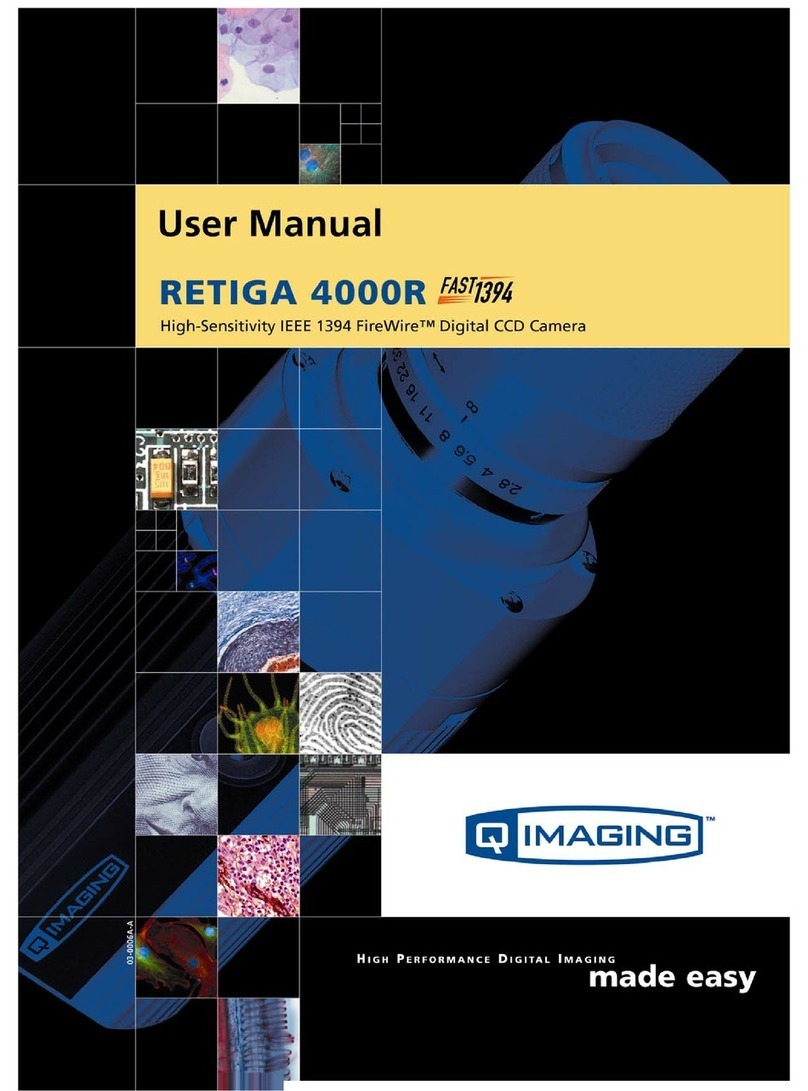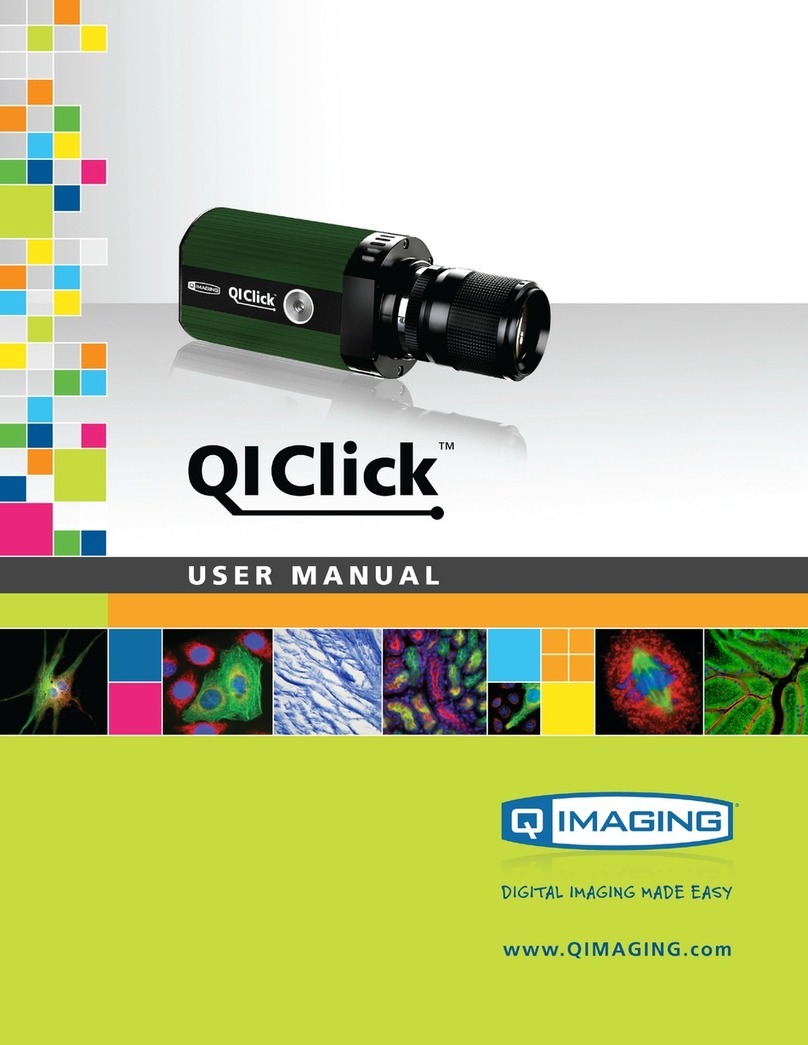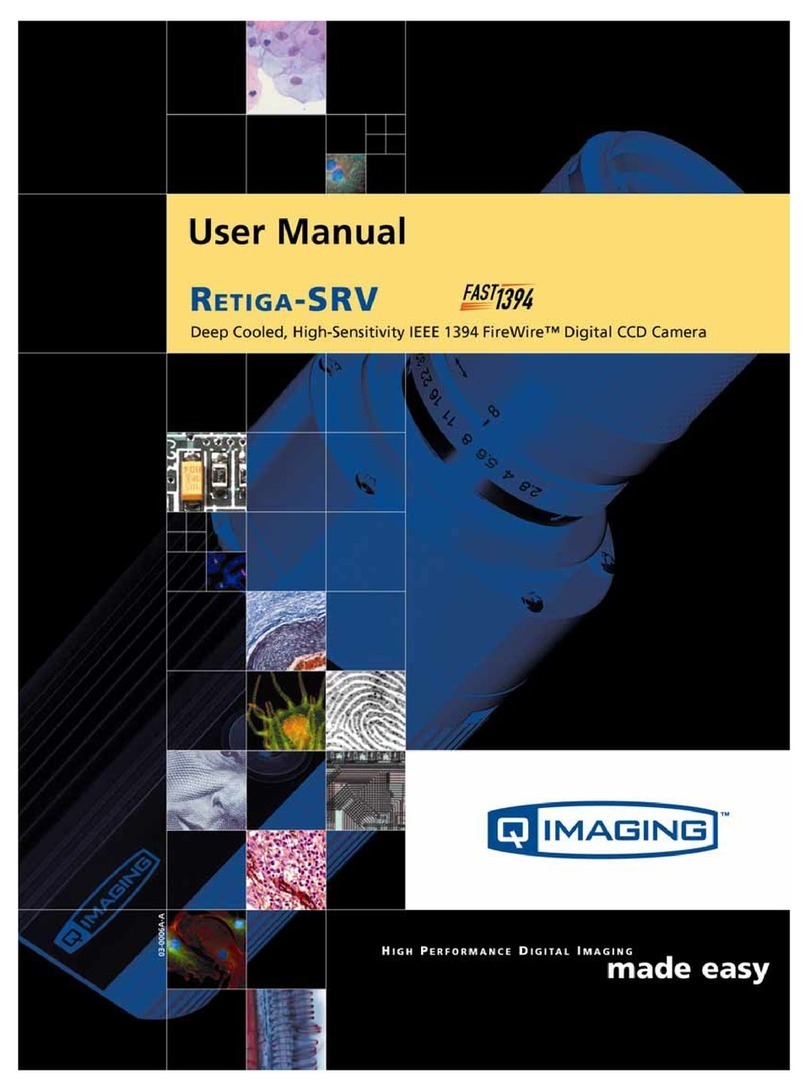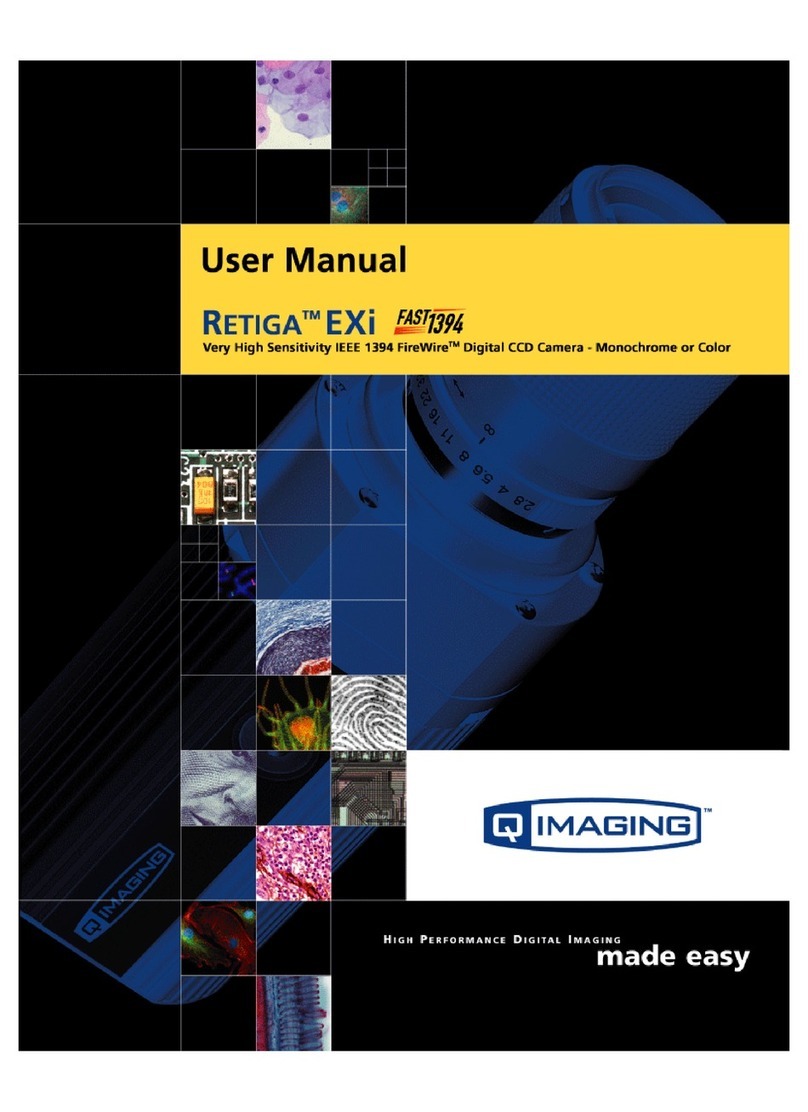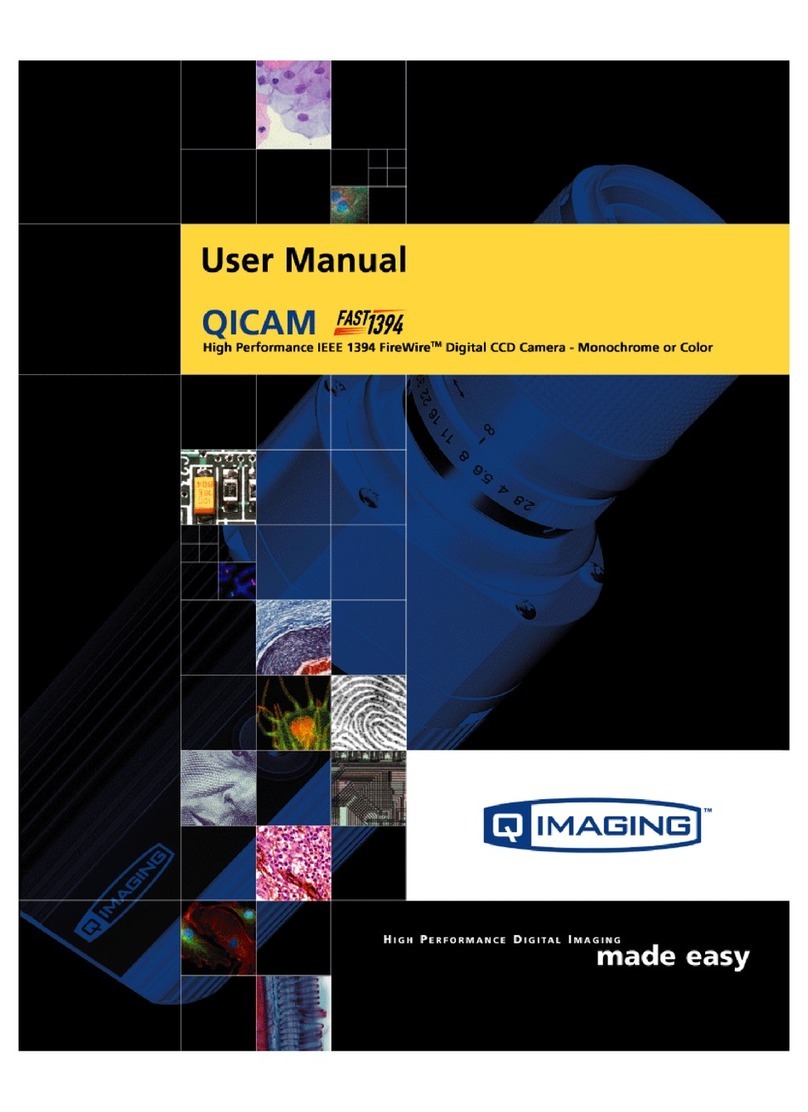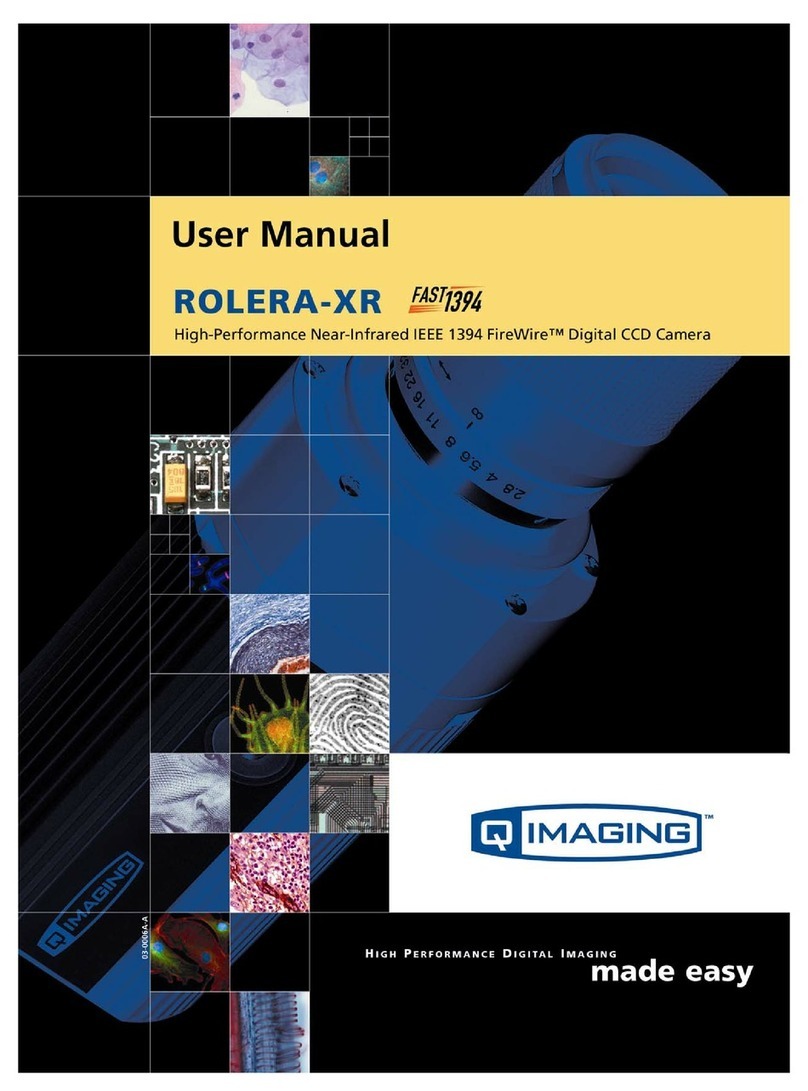
CONTENTS
Rolera EM-C2User’s Manual ............................................................................................ i
INTRODUCTION ............................................................................................................. 1
Power Requirements ................................................................................................... 1
Host Requirements ...................................................................................................... 1
IEEE 1394 (FireWire) Interface ................................................................................. 2
Cables..........................................................................................................................2
Imaging Software for Your Camera ........................................................................... 3
INSTALLATION .............................................................................................................. 4
Step 1. Install the 1394 PCI-Express card (Windows Users Only) ............................ 4
Step 2. Install Your Imaging Software ....................................................................... 5
Step 3. Connect the Rolera EM-C2.............................................................................. 5
CAMERA BASICS ........................................................................................................... 7
Turning the Camera On and Off ................................................................................. 7
Connecting the Rolera EM-C2to your Optics .............................................................7
Understanding the LED Indicators ............................................................................. 8
Capturing Images with the Rolera EM-C2................................................................... 8
ADVANCED CAMERA CONTROLS ............................................................................. 9
Cooling Capability ...................................................................................................... 9
Triggering the Rolera EM-C2Externally .................................................................... 9
Gain and Offset Controls ........................................................................................... 11
Easy-EM Mode……………....................................................................................... 11
CARING FOR YOUR CAMERA .................................................................................... 12
TROUBLESHOOTING .................................................................................................... 13
Resolving Problems with the camera ......................................................................... 13
Unresolved Problems - Contacting QImaging Support ............................................. 14
GLOSSARY ..................................................................................................................... 15
APPENDICES .................................................................................................................. 17
APPENDIX A: External Trigger Port ....................................................................... 17
ii
